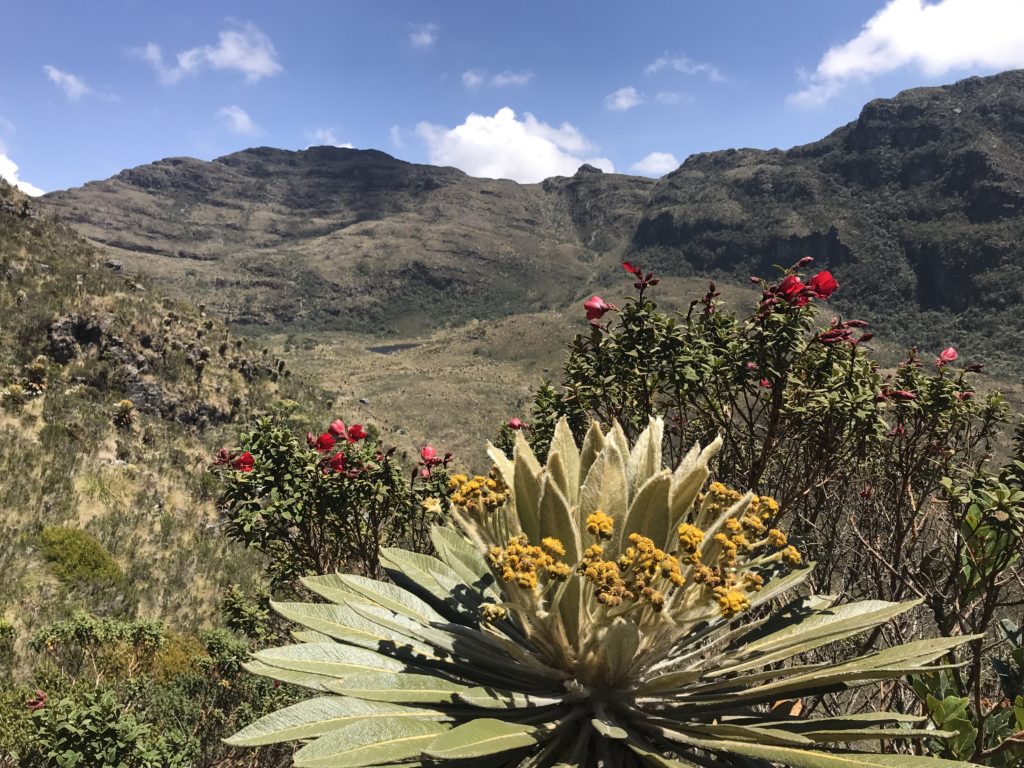

Amy and I hiked to the legendary Laguna de Iguaque (Iguaque Lake) that local Muisca Indians say is the birthplace of humanity. The grueling hike climbed 2,700’ or 900 meters to 12,500’ high into the Andes. We hiked through rain forest and above tree line to the paramo – a high alpine region where the ancient lake hangs in a box canyon. We hiked all day though muddy trails in the rain forest, up long, steep, rocky falls and above the trees to the hidden lake. This is the first time Amy hiked over 12,000’ and it was worth it! We’re getting closer to being ready to hike the Inca Trail to Machu Picchu that will go over 13,800’.
To get to the trail, we ordered a 4WD truck taxi for seven am sharp – pretty early for me. When we got to the front gate of our Airbnb at 6:58, Caesar, our taxi driver, was backing up his dusty truck to pick us up. Caesar told us how he hiked in the mountains all the time and already did an hour hike that morning starting at 5am. We spoke in broken Spanish and English as we drove along the Andes.
After only a few minutes on bumpy, dirt roads, we got stuck behind an 18-wheeler that kicked up so much dust that it looked like we were driving through thick brown fog. People waiting on the side of the road for the bus held handkerchiefs to their faces as the dust cloud enveloped them. Caesar couldn’t pass and had to back off from the dust cloud so we could see. Now I knew why his truck was covered in so much dust.
After a few minutes behind the semi, Caesar turned onto an even smaller mountain road to Iguaque Sanctuary of Flora and Fauna (SFF Iguaque) that was designed to preserve the historic and unique ecosystem around the lake. We got to the ranger station at 7:40 and had to wait for 20 minutes to pay 52,500 Columbian Pesos ($17) per person to enter the park. A ranger told us that it should take us three hours to get up and three hours to get back. We hit the trail at 8am.
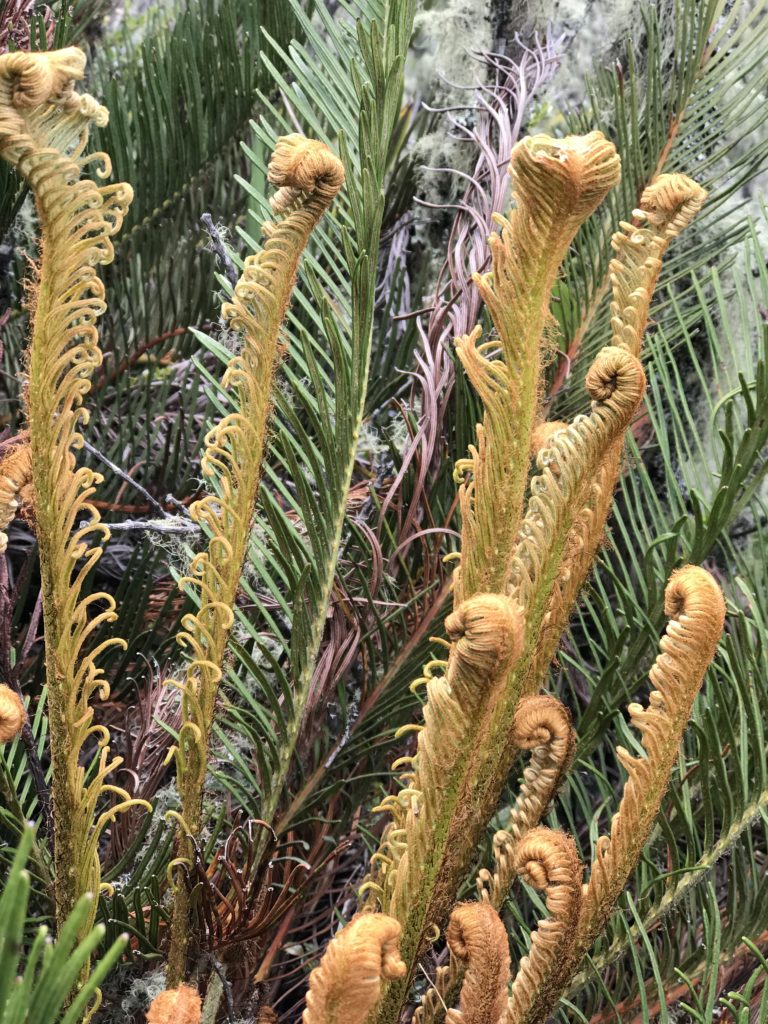
The trail was a cobblestone path for the first mile and difficult to walk on. We crossed over a clear running stream at 2,900 meters or 9,500’ – about the elevation of Breckenridge, CO. The trail turned into hard packed dirt and mud through a high rain forest. The forest was so thick that we could only see a few feet into the trees. Butterflies and a few birds could barely fly though the forest that was a mixture of bamboo, vines and moss covered trees. Ferns, orchids and other arboreal plants were thick in the trees like shown in this picture.

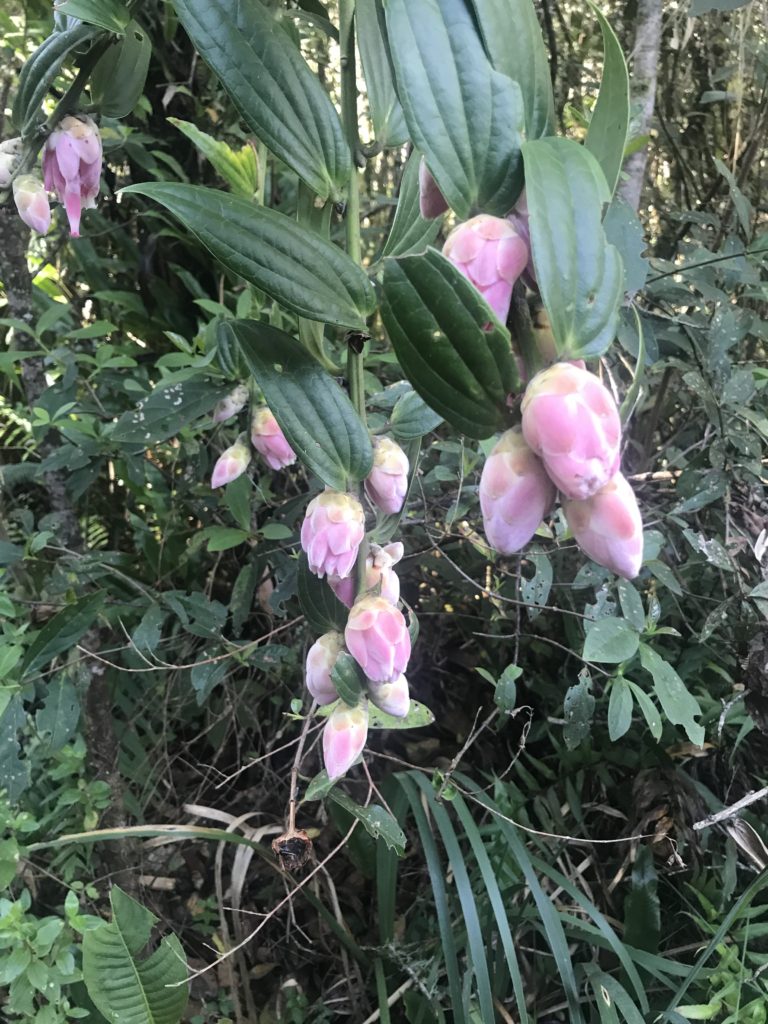
We climbed over tree roots and small mud puddles for the next couple miles and the trail always climbed. Amy used her new hiking poles for the first time and they helped her navigate the rough trail. After a couple of hours in the forest, the trees thinned and we reached a rock fall that would be a beautiful cascade if a river ran over it. The rock fall turned out to be the trail and this is where I felt in my element climbing from rock to rock. Amy wasn’t used to this type of climbing at over 11,000’ and she was winded and tired climbing over and around the rocks. The rocky ridge rose at about a fifty degree incline for 800 vertical feet. When we finally reached the top at over 12,000’, we were in the paramo where no trees grow. Without trees, we had expansive views over the surrounding mountain ranges to distant mountain ranges or cordilleras as they’re known here.
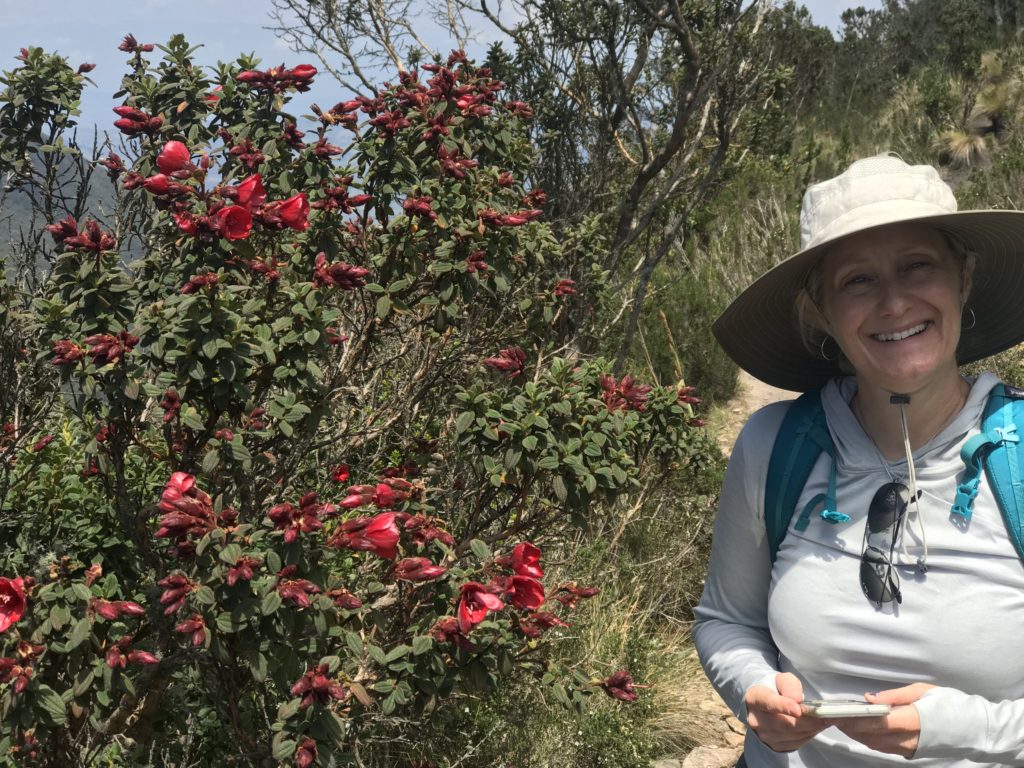
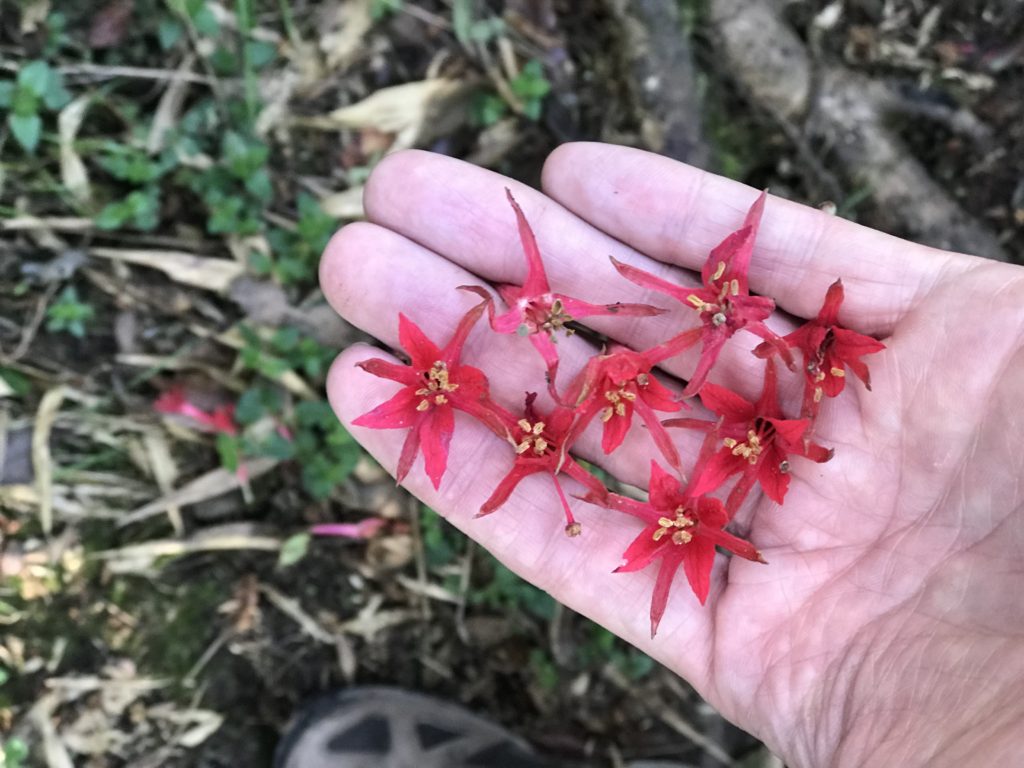
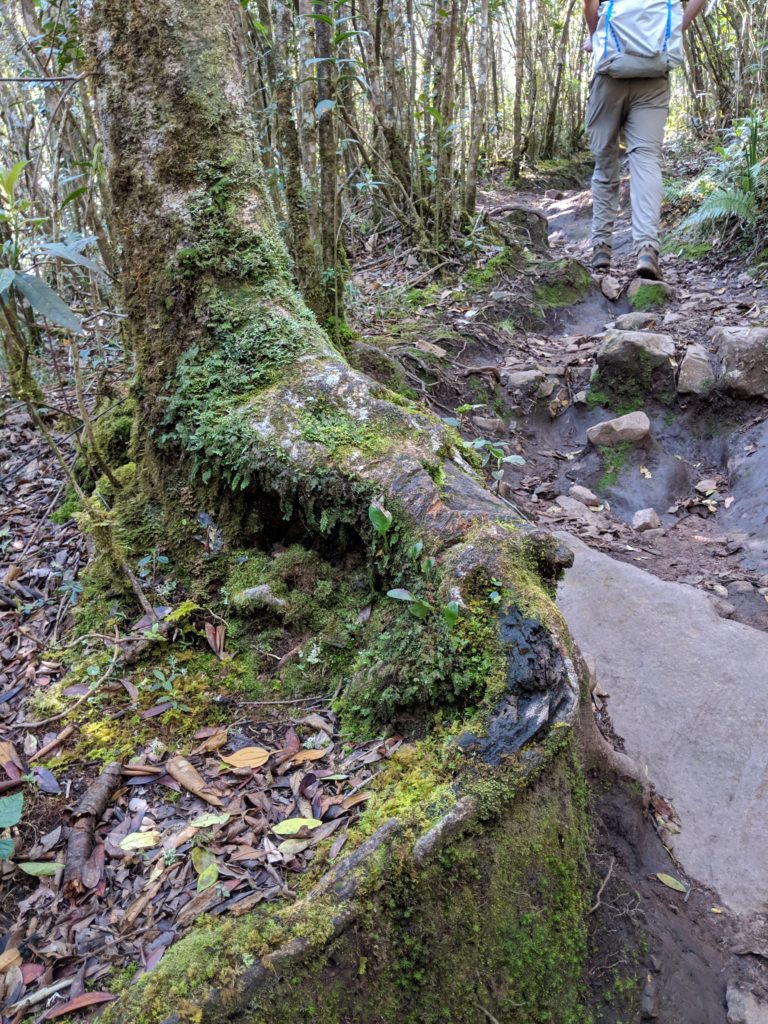
The high Andes have been separated from the rest of the world for a long time and a unique ecosystem known as the paramo has developed over the eons. The paramo is too cold and windy to grow trees (tree line is defined by the altitude where trees can’t grow anymore because it’s too cold), so special plants grow here that can thrive the cold. The main thing the plants use to survive the cold seems to be fur. Like animals that live in the snow, these plants have a furry texture that helps them trap the sunlight and keep them warm enough to photosynthesize.
The most distinct plant is the frailejones – a perennial sunflower that grows to 10’ tall. We were lucky because these Joshua Tree-like posts were in bloom. Surrounded by furry leaves that look like rabbit ears, each frailejones sported yellow bouquets that teamed with bees. Special bees lives in this high country and pollinate the flowers. Here are a few pictures from the unique environment.
The trail flattened, and we traversed the mountain towards the lake. We had spectacular views looking down on farmer’s fields thousands of feet below in the valley. The trail wandered into a box canyon where the lake sits.
The lake is very historic because of the Muisca creation myth about the lake. The Muisca people were one of the four great pre-Columbian civilizations in the Americas with the other three being the Maya, Aztec and Inca. The Muisca myth says that the goddess Bachue came out of the lake with a boy in her arms. When the boy grew up into a man, she married him and they made passionate love. They loved each other many times and populated the world. When the man got old and it was time for him to die, the happy couple went back into the lake in the form of snakes. Kind of an interesting creation myth like the Garden of Eden.
We ate lunch in the beautiful valley overlooking the lake. We were tired because of the three and a half strenuous hour hike up. It took us a half an hour longer than what the park ranger said, so I began to worry that we would miss our bus back home. If we missed the last bus, we’d have to hitchhike and I don’t think Amy would have liked that! We had four hours to get down to the bus stop – which was an hour below where Caesar had dropped us off at the park entrance.
We made good time until we reached the rock fall. Amy struggled with her short, tired legs to get down some of the rocks. She slipped and fell a few times on her butt, but Amy is persistent and quick. She mustered her strength and kept going to meet the bus. We made it to the ranger station in two and a half hours – an hour faster than it took us to go up. I hoped that someone could give us a ride from there, but no cars were there and they didn’t have a phone to call Caesar. We’d have to walk another hour.
There was little time to rest so we started down the mountain road. The rugged road was much easier to hike than the trail and we made it to the bus stop by 3:30 by hiking the last distance in about 45 minutes. We had 30 minutes to spare. All that worry about missing the bus for nothing. The bus turned out to be 30 minutes late too, so we sat at the bus stop for an hour!
We made it to the main square of Villa de Leyva in perfect time for happy hour. We ate an empanada and drank some German beers while the sun set on the square. Amy did a great job and has changed a lot in the year she has met me. She used to call herself a city girl, but now she’s climbing above 12,000’ to see the shallow lake where humanity began for the Muisca.
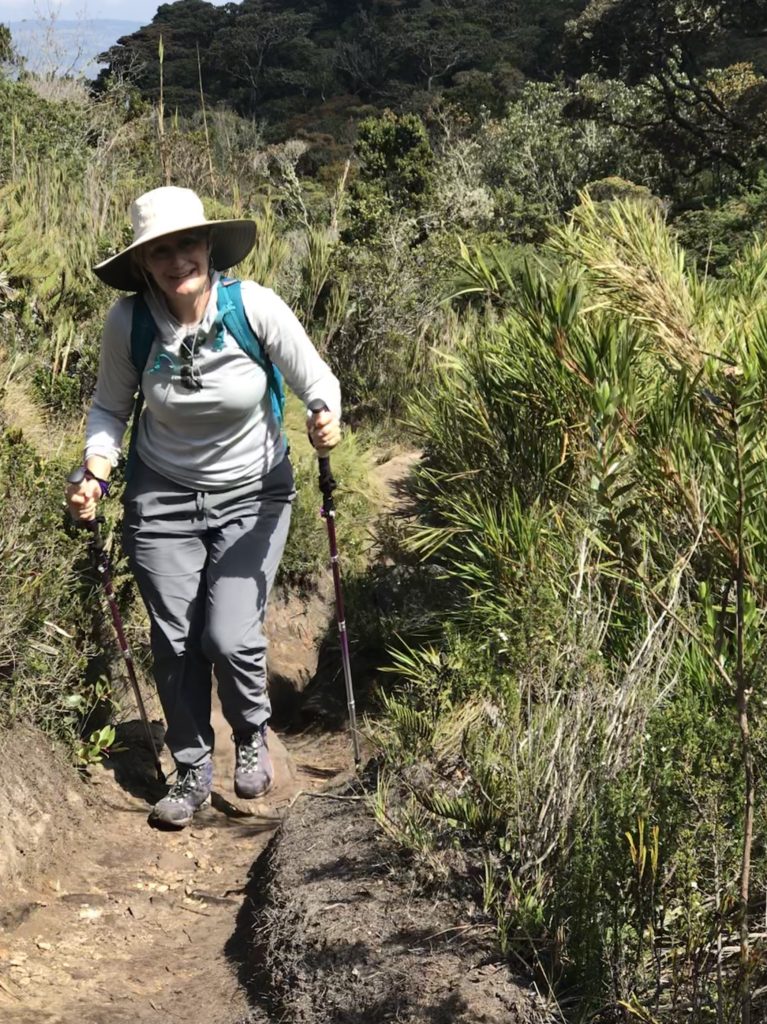
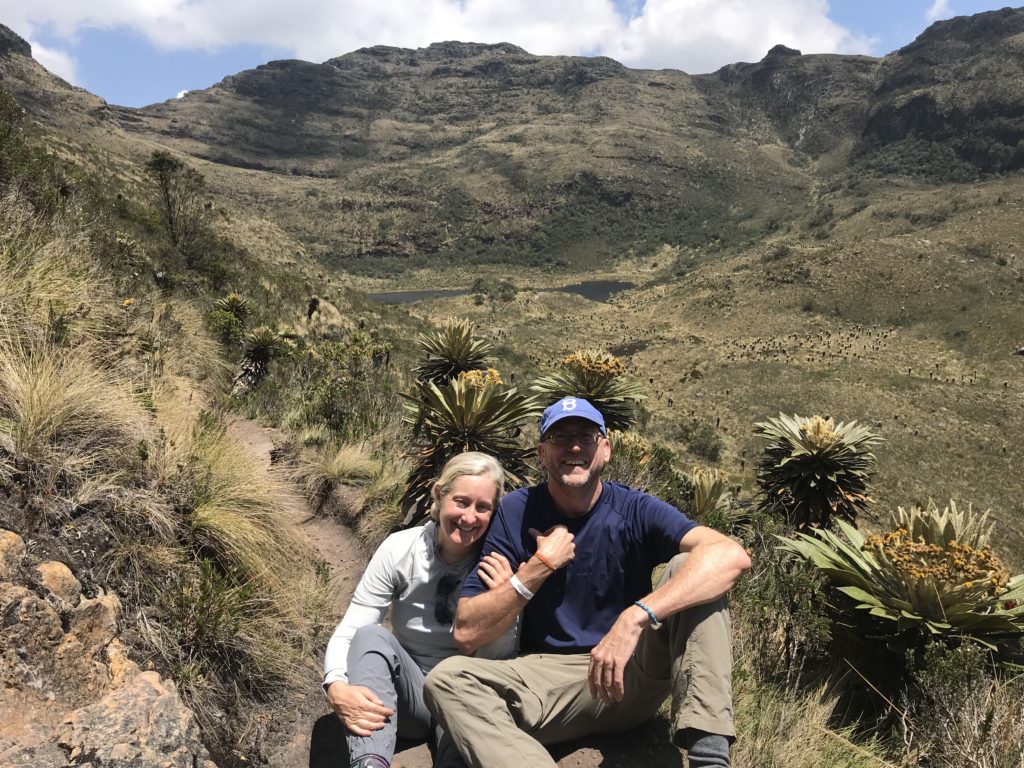

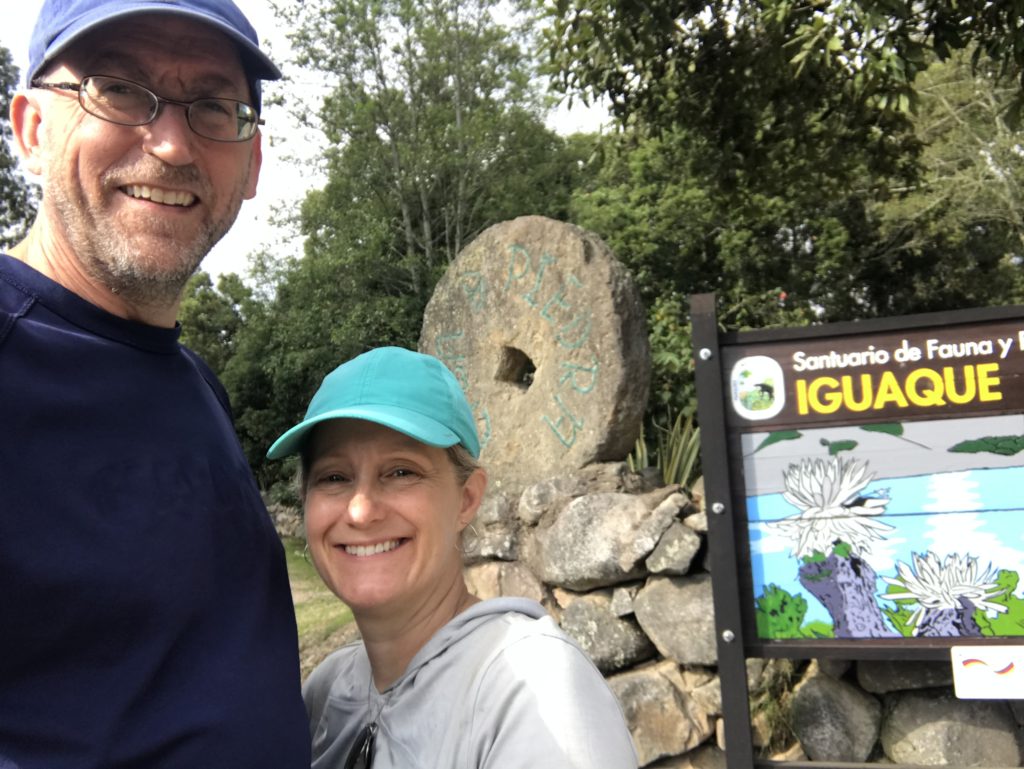
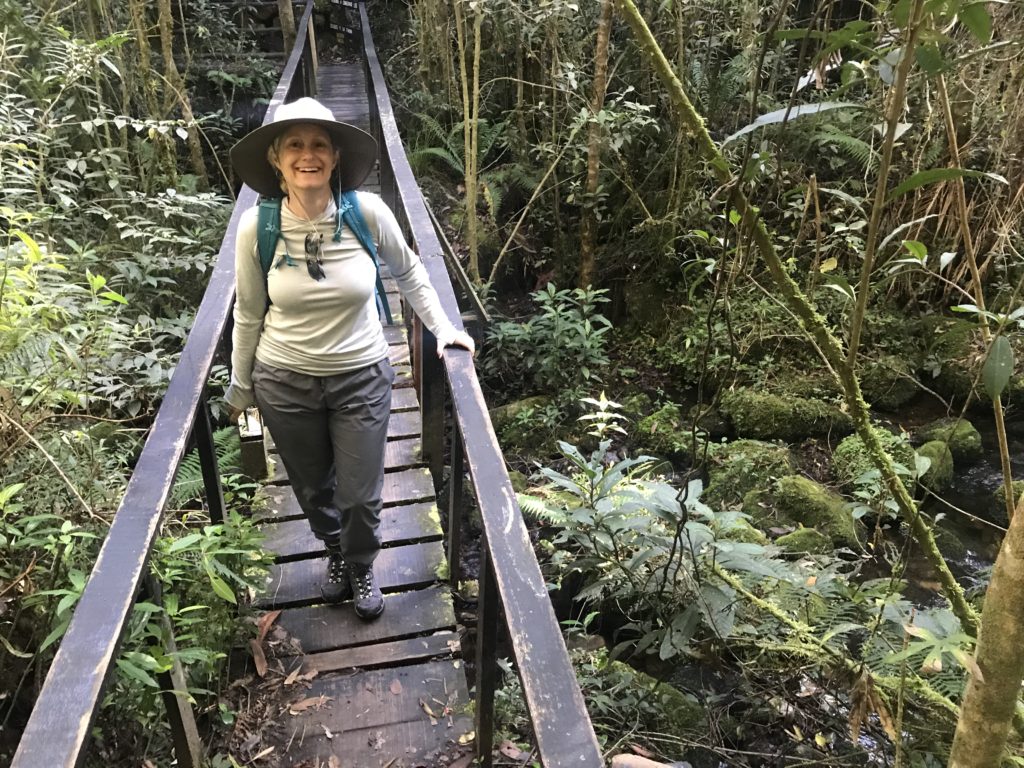
Sign up for my email newsletter here:
